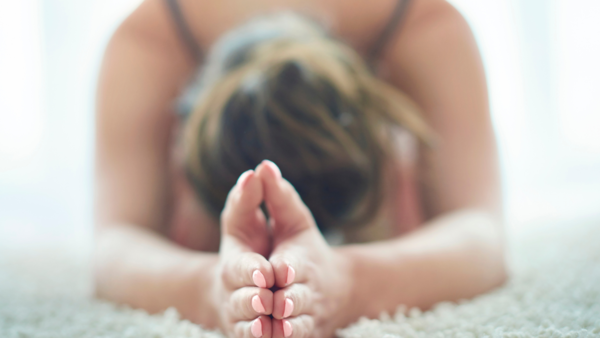What is Yin yoga?
Unlike its more dynamic counterparts, Yin yoga emphasizes passive poses held for extended periods, typically ranging from 3 to 10 minutes. While Yang yoga targets muscle tissues through active movement, Yin yoga dives deeper and focuses more on the connective tissues like tendons, fascia, and ligaments.

Image: Canva
Yin yoga isn’t merely about touching your toes; it’s a journey inward, building a connection between body and mind. A study published in the International Journal of Yoga talks about its therapeutic potential in treating conditions such as eating disorders, addictions, and trauma, thanks to its ability to unlock both physical and emotional tensions.
A Yin yoga practice demands patience and presence to begin. Practitioners can customise their practice to fit their individual bodies and abilities by emphasizing comfort over perfection and concentrating on individual needs.
No gym required! Yoga for a flat stomach by Himalayan Siddha Akshar
Yin yoga calls to people who are seeking peace in an overstimulating world. This practice provides a gentle sanctuary for everyone, be it someone looking for relief from the daily grind or someone trying to find balance in life’s chaos.
Although learning from an experienced teacher is very beneficial, yin yoga exploration can be a very private experience. Slow-paced classes that focus on internal exploration encourage practitioners to embrace their inherent uniqueness and pay attention to their bodies cues.
Even though anyone can practice yin yoga, there are a few things to be aware of. Those with osteoporosis and third-trimester pregnant women should proceed cautiously, avoiding positions that put undue strain on their spines.
Yin yoga poses, designed for deep stretching and relaxation, include gentle stretches like Child’s Pose, Dragon Pose, and Butterfly Pose, targeting areas like the hips, thighs, and lower back. Supported Fish Pose and Sphinx Pose offer gentle backbends to open the chest and shoulders, while Seated Forward Bend provides a soothing stretch for the spine and hamstrings. Half Butterfly Pose offers a variation for deeper hip and groin stretches. Reclining Twist aids in spine flexibility and digestion, while Supported Bridge Pose and Legs-Up-the-Wall Pose promote relaxation and reduce tension. These poses are typically held for several minutes, managing to release the tension of the body and promote deep relaxation.

